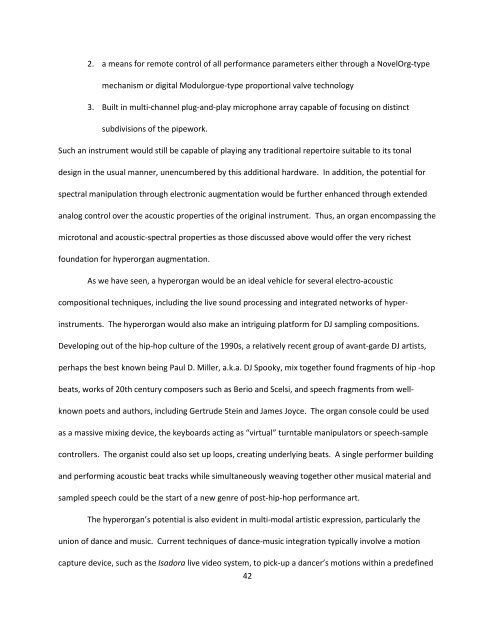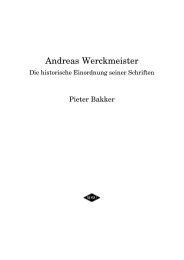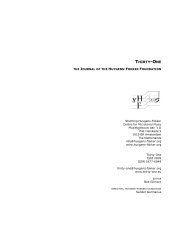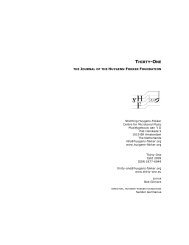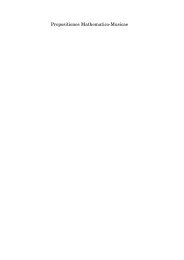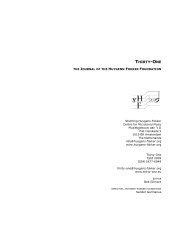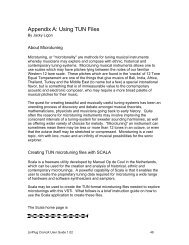Recent Organ Design Innovations and the 21st-century - Stichting ...
Recent Organ Design Innovations and the 21st-century - Stichting ...
Recent Organ Design Innovations and the 21st-century - Stichting ...
Create successful ePaper yourself
Turn your PDF publications into a flip-book with our unique Google optimized e-Paper software.
2. a means for remote control of all performance parameters ei<strong>the</strong>r through a NovelOrg-type<br />
mechanism or digital Modulorgue-type proportional valve technology<br />
3. Built in multi-channel plug-<strong>and</strong>-play microphone array capable of focusing on distinct<br />
subdivisions of <strong>the</strong> pipework.<br />
Such an instrument would still be capable of playing any traditional repertoire suitable to its tonal<br />
design in <strong>the</strong> usual manner, unencumbered by this additional hardware. In addition, <strong>the</strong> potential for<br />
spectral manipulation through electronic augmentation would be fur<strong>the</strong>r enhanced through extended<br />
analog control over <strong>the</strong> acoustic properties of <strong>the</strong> original instrument. Thus, an organ encompassing <strong>the</strong><br />
microtonal <strong>and</strong> acoustic-spectral properties as those discussed above would offer <strong>the</strong> very richest<br />
foundation for hyperorgan augmentation.<br />
As we have seen, a hyperorgan would be an ideal vehicle for several electro-acoustic<br />
compositional techniques, including <strong>the</strong> live sound processing <strong>and</strong> integrated networks of hyper-<br />
instruments. The hyperorgan would also make an intriguing platform for DJ sampling compositions.<br />
Developing out of <strong>the</strong> hip-hop culture of <strong>the</strong> 1990s, a relatively recent group of avant-garde DJ artists,<br />
perhaps <strong>the</strong> best known being Paul D. Miller, a.k.a. DJ Spooky, mix toge<strong>the</strong>r found fragments of hip -hop<br />
beats, works of 20th <strong>century</strong> composers such as Berio <strong>and</strong> Scelsi, <strong>and</strong> speech fragments from well-<br />
known poets <strong>and</strong> authors, including Gertrude Stein <strong>and</strong> James Joyce. The organ console could be used<br />
as a massive mixing device, <strong>the</strong> keyboards acting as “virtual” turntable manipulators or speech-sample<br />
controllers. The organist could also set up loops, creating underlying beats. A single performer building<br />
<strong>and</strong> performing acoustic beat tracks while simultaneously weaving toge<strong>the</strong>r o<strong>the</strong>r musical material <strong>and</strong><br />
sampled speech could be <strong>the</strong> start of a new genre of post-hip-hop performance art.<br />
The hyperorgan’s potential is also evident in multi-modal artistic expression, particularly <strong>the</strong><br />
union of dance <strong>and</strong> music. Current techniques of dance-music integration typically involve a motion<br />
capture device, such as <strong>the</strong> Isadora live video system, to pick-up a dancer’s motions within a predefined<br />
42


